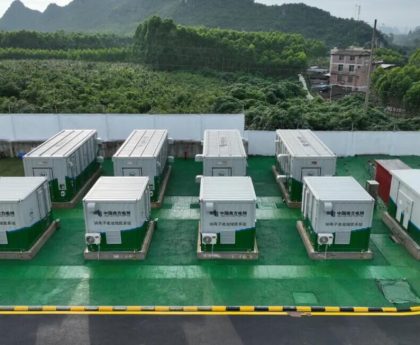Connecticut is at a pivotal moment in the transition to renewable energy.
Embracing clean energy reduces our reliance on environmentally damaging fossil fuels while stimulating economic growth and local job creation. As we work to achieve an effective transition to zero carbon energy in Connecticut, we encourage the Connecticut Public Utilities Regulatory Authority (PURA) to adopt community solar policies that will deliver clean energy fairly and equitably across our state.
Public Act 24-31, just passed by the Connecticut General Assembly, gives PURA the keys to drive this essential transition.
Community solar refers to programs that facilitate clean energy access for those unable to install solar panels, such as renters or individuals with unsuitable rooftops. These programs help to broaden the adoption of renewables while delivering cost savings through credits on subscribers’ electricity bills. Community solar also supports local economies through job creation, helps reduce greenhouse gas emissions, and promotes energy equity by prioritizing lower-income households.
In Connecticut’s current limited platform, community solar is made possible through the state’s Shared Clean Energy Facility (SCEF) Program. Established by the Connecticut General Assembly and administered by the Connecticut Department of Energy and Environmental Protection in conjunction with Connecticut’s utility companies, SCEF offers a practical, albeit small, alternative for residents and businesses unable to pursue their own solar projects.
Through SCEF, low- and moderate-income energy customers can benefit directly from a shared clean energy facility’s power production. As SCEF projects become operational, customers are selected to enroll as “subscribers.” Subscribers then receive a monthly bill credit for a portion of the electricity generated by the project for up to 20 years, at no cost.
Verogy is proud to have delivered the state’s largest SCEF project to date, Enfield Solar One, located in Enfield.
Enfield Solar One’s 5.96 megawatts (MW) DC array will produce an estimated 8,566,000 kWh annually. With a credit of 2.5 cents per kWh applied to the monthly bill of subscribers, Enfield Solar One will generate an estimated $4,283,000 in electric bill savings for low- and moderate-income households and other utility customers over the next 20 years. By providing low- and moderate-income customers with a monthly credit on their bills, our project is helping to ensure the benefits of renewable energy are shared widely and fairly.
Verogy is on track to build more Connecticut SCEF projects than any other company, with an estimated total of 42 MW to be developed by our team in the coming years. Importantly, every kilowatt-hour produced by these projects will mean fewer greenhouse gas emissions and critical progress in the fight against climate change.
Community solar also delivers meaningful benefits to the wallets and pocketbooks of Connecticut’s residents. For example, averaged over the last three years, the cost to Eversource, Connecticut’s largest utility, to purchase a kilowatt hour to service their customers is $.1421. Procured from traditional energy sources, these kilowatt hours only meet the minimum Connecticut requirement for renewable generation mix (currently 37%).
By contrast, when Eversource obtains energy generated by Verogy’s SCEF project, their cost is $.0925 per kilowatt hour, a remarkable 35% less, and with the added benefit of the energy being 100% renewable. Moreover, the kWh price for a Connecticut SCEF project is locked in for 20 years, meaning that as energy prices under standard offer continue to increase, the energy being sold by SCEF projects will stay at a lower fixed rate.
Unfortunately, when it comes to community solar, Connecticut lags dramatically behind its peers, and the numbers are stark. As of June 2024, Connecticut has deployed approximately 7 MW AC of clean energy through community solar. What about our neighbors? New York: 1,800 MW. Massachusetts: 850 MW. New Jersey and Maryland have been able to deploy approximately 141 MW and 101 MW each and are expanding rapidly.
If Connecticut wants to make clean energy more available to all, not just well-off residents living in the wealthiest communities, significant actions will need to be taken. Thanks to the groundwork laid by SCEF, and the authority granted to PURA via Public Act 24-31, Connecticut has the potential to bring thousands of megawatts of clean power to our state’s families, but only if regulators and lawmakers take meaningful action soon.
As part of Public Act 24-31, lawmakers have directed PURA to conduct a study to expand SCEF and research potential successor programs once SCEF expires in 2027. Unfortunately, the results of this study are not due until Jan. 15, 2026. As the months go by between now and then, residents will continue to bear high energy costs, Connecticut will fall short of meeting its climate goals, and we will slip inevitably further behind our peer states.
This unfortunate outcome can be avoided through timely action by PURA. By taking decisive action soon, learning from the states that have already eclipsed Connecticut’s efforts, and designing a truly impactful community solar program, PURA could fulfill clean energy’s promise to all, not just the few.
Projects like Verogy’s Enfield Solar One are not just about producing renewable energy; they’re about making that energy more accessible than ever. Thanks to SCEF, even more Connecticut customers can now benefit from clean energy — but we can do more.
A robust community solar policy is an important part of our path to a sustainable future and time is of the essence. As PURA’s commissioners review SCEF and make plans for its successor, we encourage them to take swift action to craft a community solar program that harnesses the sun’s potential, not just for a few, but for every Connecticut resident.
William Herchel is Chief Executive Officer of Verogy.
This post was originally published on 3rd party site mentioned in the title of this site






